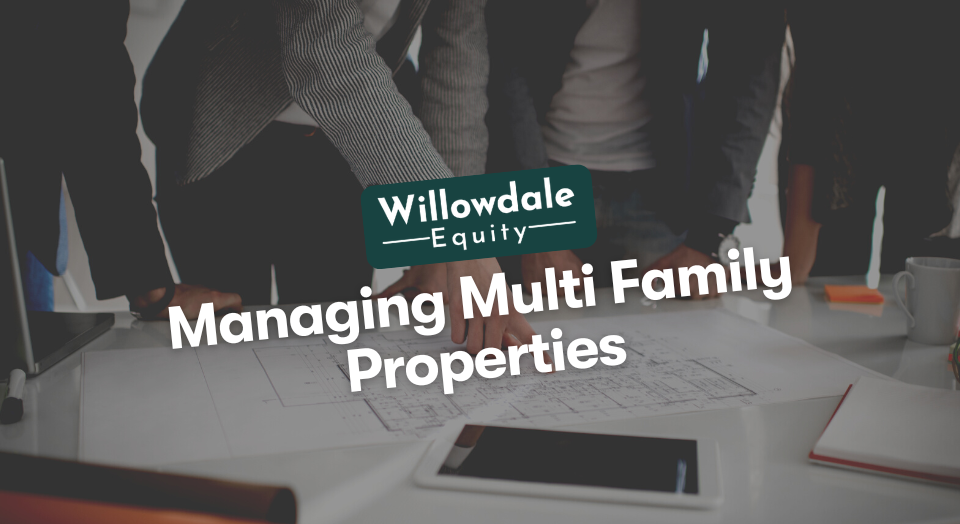
Managing Multi Family Properties: What You Need to Know
This article is part of our guide on property management and asset management, available here.
Multifamily real estate properties are lucrative investments that can generate steady cash flow from multiple tenants. This type of investment property is one of the strongest real estate assets you can add to your portfolio. However, managing multifamily properties, on the other hand, can be a chaotic and challenging endeavor, especially if you lack the skills or experience needed for the job.
In this post, we’ll share everything you need to know about multifamily property management so you can employ the right strategies to handle day-to-day operations.
So, let’s get right into it.
Key Takeaways
-
Managing legacy tenants, new tenants, maintenance, and other day-to-day operations is no easy task, especially with multiple families living in the same property.
-
Managing a multifamily property requires a solid understanding of property and asset management. These two core roles help ensure investment performance.
-
There’s more to this role than merely filling vacancies or managing tenants. You have to manage several leasing and administrative responsibilities.
How to Manage Multifamily Property
Managing a multifamily property requires a solid understanding of property and asset management. These two core roles help ensure investment performance.
- Property Management: Overseeing and managing the day-to-day operations of the property.
- Asset Management: Overseeing the property management in an effort to ensure the property is staying the course of the business plan and performance projections.
There’s more to this role than merely filling vacancies or managing tenants.
You have to manage several leasing and administrative responsibilities, including:
- Crafting rental agreements.
- Collecting rent.
- Handling move-in inspections.
- Setting community ground rules.
- Taking care of maintenance issues, including repairs, snow removal, gutter cleaning, and pest infestations, to name a few.
- Managing evictions and taking legal action when necessary, etc.
Learning how to manage a multifamily property takes time and effort. Ideally, it would help if you familiarized yourself with professional property management systems to help you get a better grip on recurring tasks, including the ones mentioned above.
Furthermore, another critical aspect of multifamily real estate investing and management involves overseeing your property’s condition and performance compared to other properties in your local real estate market.
In the next section, we’ll dive deeper into these essential aspects of multifamily property and asset management.
Managing Multifamily Properties

Experienced property managers try to centralize and streamline the most important aspects of rental property management. Since these properties are larger than single-family homes and comprise multiple units, they’re far more challenging to manage.
However, the following list can shrink this large operation and simplify the complex processes involved:
- Tenant Selection
- Building a Relationship With the Tenant Base
- Property Maintenance
- Collections
- Turning Units Fast
- Hitting Projections
Let us explore this list further:
1.) Tenant Selection
Choosing the right tenants for your multifamily property is the key to establishing a good relationship and ensuring your property is safe. So much depends on this simple but tedious task. Most inexperienced property managers usually get it wrong.
Unfortunately, there’s no foolproof method you can use to screen your tenants. However, you can ask certain questions to get to know your potential renters and make a more informed decision, such as:
- What’s your reason for moving? Look for answers like, “we’re relocating” or “I’m looking to downsize from a single-family home.”
- What’s your monthly income? This is important because you need to know whether or not the tenants can pay their rent on time. Look for tenants who earn around three times your asking rent.
- Do you mind if we run a background check? Any answer other than “yes” is a potential red flag. Keep it simple – no checks, no keys.
2.) Building a Relationship With the Tenant Base
The purpose of investing in a multifamily property is to generate passive income. However, to maintain steady cash flow, you need to foster a good landlord-tenant relationship. This is an essential aspect of property management, and many property managers often neglect it. Fortunately, building and maintaining a solid relationship isn’t too difficult.
Below are some useful tips:
- Always keep a multi-channel communication line open to send notifications/reminders and address concerns.
- Organize every aspect of operations from paperwork to inspections, communications, and rent collection proactively.
- Set ground rules and adhere to them with marginal flexibility.
- Establish a solid foundation for the tenancy by being more friendly and open.
- Learn and follow the landlord-tenant laws (local, state, and federal) to ensure you or your tenant don’t do anything illegal.
3.) Property Maintenance

Regular maintenance is perhaps multifamily property management’s most challenging and time-consuming aspect. Property managers must focus on this to ensure their tenants’ habitable living conditions.
As a property manager, you’d be responsible for taking care of structural and plumbing repairs, cleaning, renovations, and utility management. The last thing you want is to neglect to maintain your property, as it will come back to haunt you sometime in the future. Therefore, you should take care of all property maintenance issues proactively.
Here are a few tips to help you do that:
- Create a simple and streamlined system for renters to report complaints and issues. These reports are referred to as “work orders.”
- Always have maintenance teams on standby to fix issues quickly and cost-effectively.
- Hire a property management company to outsource maintenance tasks and other processes you lack the expertise or experience to manage.
- Ensure the maintenance process is done in a controlled environment with tenants notified and consented.
- Ensure you carry out every type of inspection (move-in, move-out, drive-by, and seasonal)
Multifamily properties will cost a lot more to maintain than single-family properties. Hence, ensure a decent budget for repairs, general upkeep, and other daily operations.
4.) Collections
Collecting rent is a more challenging than you probably think, especially when managing large or multiple multifamily properties. No matter where you go, delayed or missed payments are a part of managing multifamily properties.
However, you can employ different tactics to encourage tenants to pay early or on time, such as:
- Making credit reporting available to help tenants improve their credit scores.
- Offering an online rent collection system to minimize or avoid late payments.
- Set up pre-authorized ACH payments with tenants.
- Actively listening to and addressing complaints and issues.
- Rewarding early payers with discounts.
5.) Turning Units Fast
The longer your units remain vacant after a tenant leaves, the more rental income you forfeit. Therefore, you should quickly proceed with repairing the unit to get it ready to be marketed and leased up as soon as possible.
6.) Hitting Projections

Regardless of the type of real estate investment you make (multifamily homes, single-family property, etc.), you need to play a double role as property and asset manager. Like any other business, you need to plan goals, such as average rent collection, cost reduction, and other key performance indicators. Important KPIs to consider include:
- Move-Outs vs. Move-Ins (Tenant Turnover)
- Occupancy and vacancy rates
- Delinquency rate
- New Effective Rent for New Leases
- Expense Averages
- Collections
- Property management fees, etc.
Frequently Asked Questions about Multifamily Property Management
There are many ways to maximize your property’s market value. The easiest ways would be to reduce your expenses or raise your rents, increasing your net operating income. If you have empty units in your multifamily home, increasing occupancy will also increase the value as multiple families move in.
You might think that managing more than a single building is undoable. However, a person can easily manage multiple multifamily properties with hundreds of units with the right resources and tools.
Managing Multifamily Properties — Conclusion
As mentioned earlier, managing legacy tenants, new tenants, maintenance, and other day-to-day operations is no easy task, especially with multiple families living in the same property.
If you’re not interested in managing a multifamily property, join the investors club here at Willowdale Equity to passively invest in value-add multifamily real estate investments across the southeastern United States.
Interested In Learning More About PASSIVE Real Estate Investing In Multifamily Properties?
Get Access to the FREE 5 Day PASSIVE Real Estate Investing Crash Course.
In this video crash course, you’ll learn everything you need to know from A to Z
about passive investing in multifamily real estate.
We’ll cover topics like earned income vs passive income, the tax advantages, why multifamily, inflation, how syndications work, and much much more!




